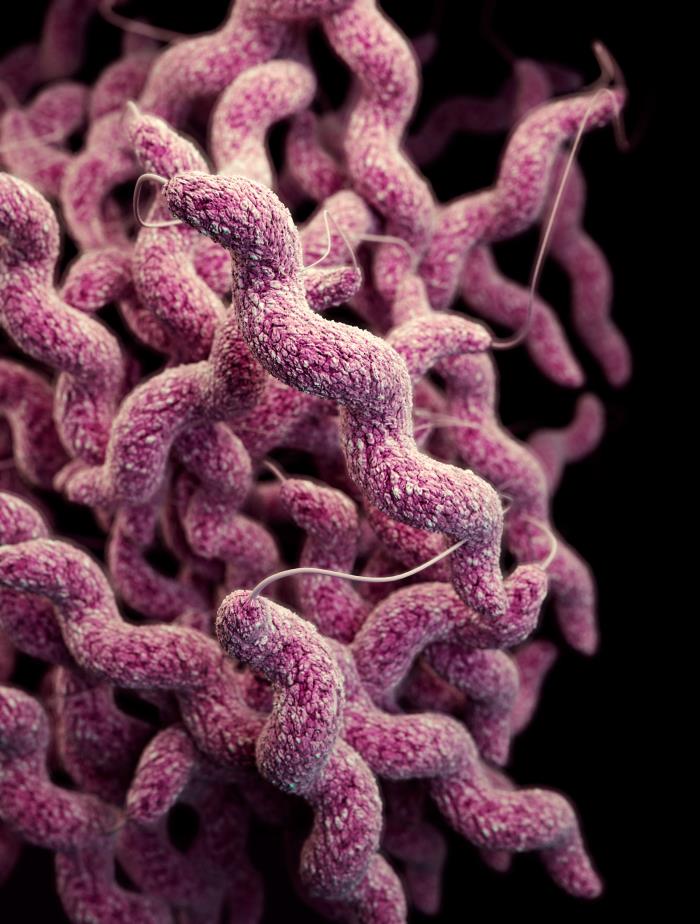Swedish health officials have reported an unusual rise in campylobacter cases in the last two weeks. The increase coincides with reports of elevated occurrence of campylobacter in chicken flocks.

Image/CDC
An accumulation of cases linked to workers in chicken production has also been reported. It is not yet known whether there is any link between the different events, but the overall analysis speaks that chicken can be the reason for the increase.
The affected authorities are working to investigate the causes of the increase in campylobacter cases and to take action.
What is Campylobacter?
It is a bacterium that can be found in chicken, in healthy cattle, birds, raw milk, and contaminated water. Most cases of campylobacteriosis are associated with eating raw or undercooked poultry meat or from cross-contamination of other foods by these items. It is also possible to get infected from the feces of an infected pet cat or dog.
It doesn’t take a lot of this organism to get you ill. In some studies it showed that as little as 500 organisms can cause disease in some individuals.
Campylobacter jejuni, the species most often implicated in infection, causes diarrhea, which may be watery or sticky and can contain blood and white blood cells. Other symptoms often present are fever, abdominal pain, nausea, headache and muscle pain. The illness usually occurs 2-5 days after ingestion of the contaminated food or water. Illness generally lasts 7-10 days, but relapses are not uncommon (about 25% of cases).
There can be complications associated with campylobacteriosis; they include arthritis and neurological disorder Guillain-Barré syndrome. It is estimated that the latter is seen in one out of every 1000 cases of Campylobacter.
Most cases of Campylobacter are self-limiting and do not require treatment. However, severe cases can be treated with antibiotics to shorten the length of the disease.
- Iceland reports norovirus outbreak linked to oysters
- Chronic wasting disease reported in Grand Teton National Park deer
- Kentucky: Northern counties report hepatitis A increases
- Outbreak News This Week Radio Show 12-2-18
- Lisbon reports more measles
- Dominican Republic reports increase in malaria
- Asheville: Chickenpox outbreak spreads into the community

 Outbreak News TV
Outbreak News TV
I like sweden country.but how can apply to visit.